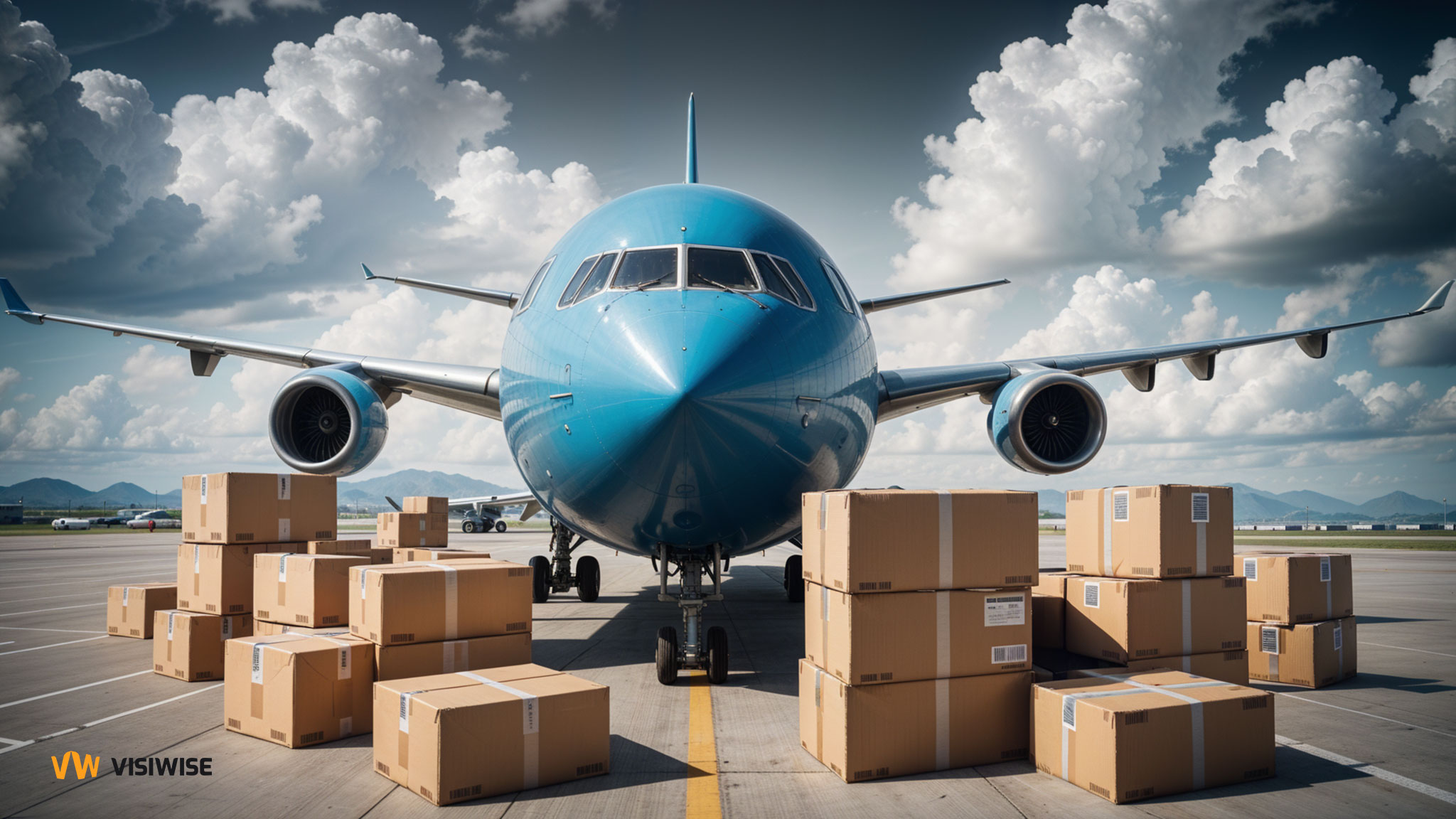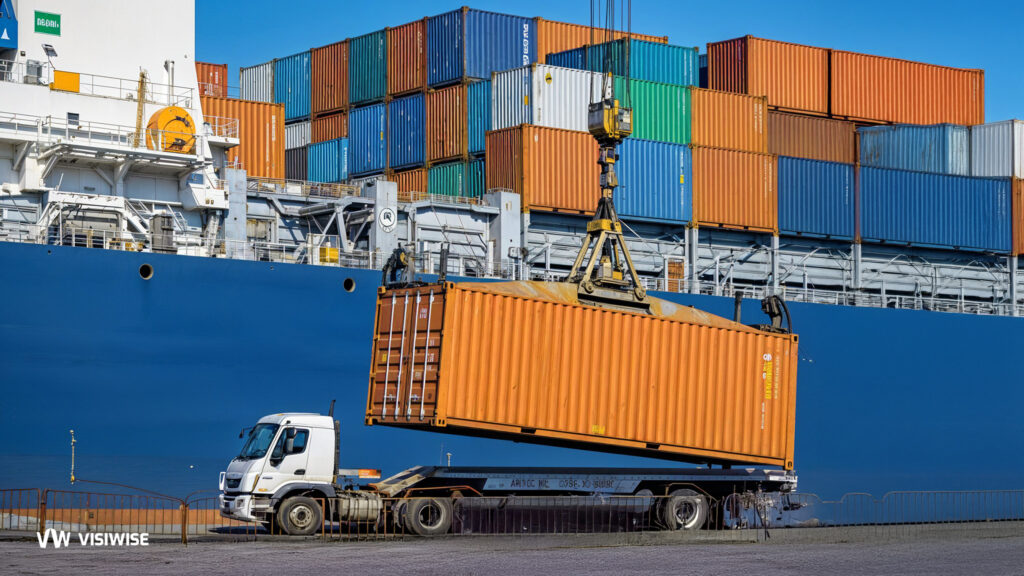In the intricate web of global commerce, airfreight and air cargo play pivotal roles, driving the efficiency and effectiveness of international trade. From enabling just-in-time manufacturing to ensuring the timely delivery of perishable goods, air transport has revolutionized how goods move across the globe. This article delves into the evolution, importance, and future prospects of airfreight and air cargo, highlighting their integral place in the modern economy.
Historical Development of Air Cargo
Early Beginnings
The concept of airfreight began to take shape in the early 20th century, shortly after the advent of powered flight. The first recorded air cargo flight took place in 1910 when a Wright Model B aircraft transported a bolt of silk from Dayton to Columbus, Ohio. This pioneering flight set the stage for the future of air transport.
World War II and Post-War Expansion
World War II marked a significant turning point in the development of air cargo. The war necessitated the rapid movement of troops and supplies, leading to advancements in aircraft design and logistics. Post-war, many military aircraft were repurposed for civilian use, and airlines began to establish dedicated cargo services. The establishment of the International Air Transport Association (IATA) in 1945 further standardized and regulated air transport, facilitating smoother international operations.
The Jet Age and Technological Advancements
The 1960s ushered in the jet age, with jet-powered aircraft dramatically increasing cargo capacity and range. The Boeing 707 and the Douglas DC-8 were among the first jetliners to offer significant cargo space. The introduction of wide-body aircraft like the Boeing 747 in the 1970s revolutionized air cargo by allowing larger volumes of goods to be transported more efficiently.
The Role of Airfreight in Global Trade
Speed and Efficiency
One of the primary advantages of airfreight is speed. Air transport is the fastest mode of moving goods over long distances, making it indispensable for time-sensitive shipments. Pharmaceuticals, perishable food items, and high-value electronics are examples of goods that benefit from the rapid transit times offered by air cargo.
Just-in-Time Manufacturing
Airfreight is crucial in supporting just-in-time (JIT) manufacturing processes, where components are delivered precisely when needed, minimizing inventory costs and enhancing production efficiency. This is particularly important in industries like automotive and electronics, where timely delivery of parts is critical to maintaining production schedules.
Global Supply Chain Integration
Air cargo plays a vital role in integrating global supply chains. It enables companies to source raw materials and components from different parts of the world, assemble them in a central location, and distribute finished products to global markets. This interconnectedness enhances the competitiveness of businesses by providing access to a broader range of suppliers and markets.
Air Cargo Industry Structure
Major Players
The air cargo industry comprises several key players, including airlines, freight forwarders, ground handlers, and integrators like FedEx and UPS. These entities collaborate to provide end-to-end logistics solutions, ensuring the efficient movement of goods from origin to destination.
Airlines
Airlines dedicated to cargo, such as Cargolux and Atlas Air, operate alongside passenger airlines that offer belly cargo services. Belly cargo utilizes the underfloor space of passenger aircraft, optimizing capacity and reducing costs.
Freight Forwarders
Freight forwarders act as intermediaries between shippers and carriers, arranging the transportation of goods and handling documentation, customs clearance, and other logistics. Companies like DHL Global Forwarding and Kuehne + Nagel are prominent players in this sector.
Integrators
Integrators like FedEx, UPS, and DHL Express provide comprehensive logistics solutions, including air transport, ground handling, and last-mile delivery. Their extensive networks and integrated services offer shippers a seamless and efficient transportation solution.
Technological Innovations in Air Cargo
Digitalization and Automation
The air cargo industry is increasingly embracing digitalization and automation to enhance efficiency and transparency. Technologies such as electronic air waybills (e-AWB), cargo tracking systems, and automated handling equipment streamline operations and provide real-time visibility of shipments.
Drones and Unmanned Aerial Vehicles (UAVs)
Drones and UAVs are emerging as potential game-changers in the air cargo industry. They offer the promise of faster and more flexible delivery options, particularly in remote or hard-to-reach areas. Companies like Amazon and Zipline are already experimenting with drone delivery services, and regulatory frameworks are evolving to accommodate these innovations.
Sustainable Aviation Fuels (SAFs) and Green Technologies
As environmental concerns grow, the air cargo industry is under pressure to reduce its carbon footprint. Sustainable aviation fuels (SAFs) made from renewable resources are being developed to replace conventional jet fuel. Additionally, advancements in aircraft design and engine technology aim to improve fuel efficiency and reduce emissions.
Challenges Facing the Air Cargo Industry
Regulatory and Security Issues
The air cargo industry is heavily regulated, with stringent security measures in place to prevent smuggling, terrorism, and other illegal activities. Compliance with international regulations, such as those set by the International Civil Aviation Organization (ICAO), adds complexity to operations.
Capacity Constraints and Infrastructure
Airport capacity and infrastructure limitations can pose significant challenges to the air cargo industry. Congested airports, inadequate cargo handling facilities, and limited runway capacity can lead to delays and increased costs. Investments in infrastructure are necessary to accommodate the growing demand for air cargo services.
Environmental Concerns
The environmental impact of air cargo, particularly its contribution to greenhouse gas emissions, is a pressing issue. The industry faces increasing scrutiny from regulators, environmental groups, and the public. Adopting greener technologies and practices is essential to mitigate the environmental impact and ensure sustainable growth.
The Future of Air Cargo
E-commerce and the Growth of Airfreight
The rise of e-commerce has significantly boosted demand for airfreight services. Consumers increasingly expect fast delivery times, and e-commerce giants like Amazon rely heavily on air transport to meet these expectations. The growth of cross-border e-commerce presents a substantial opportunity for the air cargo industry, driving innovation and expansion.
Technological Advancements
Advancements in technology will continue to shape the future of air cargo. Blockchain, for instance, has the potential to revolutionize supply chain transparency and security by providing an immutable record of transactions. Artificial intelligence (AI) and machine learning can optimize routing, predict demand, and improve decision-making processes.
Sustainable Practices
The industry’s commitment to sustainability will be a defining factor in its future development. Investments in SAFs, electric aircraft, and other green technologies will be critical to reducing the environmental impact of air cargo. Collaborations between industry stakeholders, governments, and environmental organizations will be necessary to achieve these sustainability goals.
Resilience and Adaptability
The COVID-19 pandemic highlighted the importance of resilience and adaptability in the air cargo industry. The rapid shift in demand from passenger to cargo flights, the surge in medical supply shipments, and the challenges of operating during a global crisis demonstrated the industry’s ability to adapt. Future success will depend on maintaining this flexibility in the face of changing market conditions and disruptions.
Exploring 9 Common Types of Air Cargo
GENERAL CARGO
General cargo serves as the cornerstone of the air freight service industry, providing a versatile and indispensable category that caters to a wide range of goods and products. This category encompasses items such as electronics, clothing, machinery parts, and medical supplies, among others. Manufacturers, retailers, and businesses across numerous sectors heavily rely on general cargo air freight services to transport their goods quickly and efficiently to various destinations around the world.
One of the defining characteristics of general cargo is its ability to handle items that do not require specific handling or storage conditions during transportation. Unlike specialized cargo categories, general cargo offers a more straightforward approach in terms of packaging and handling requirements. While specific restrictions and regulations may apply depending on the nature of the items being transported, general cargo typically allows for streamlined operations, contributing significantly to its substantial market share in the air cargo industry.
Characteristic:
- Versatile and indispensable category catering to a wide range of goods and products.
- Includes items such as electronics, clothing, machinery parts, and medical supplies.
- Preferred choice for manufacturers, retailers, and businesses seeking swift and efficient transportation solutions.
- Does not require specific handling or storage conditions during transit.
- Offers streamlined operations, contributing to its substantial market share in the air cargo industry.
Example:
- Electronics (e.g., consumer electronics, electronic components)
- Clothing (e.g., apparel, textiles)
- Machinery parts (e.g., automotive components, industrial machinery)
- Medical supplies (e.g., pharmaceuticals, medical equipment)
SPECIAL CARGO
Special cargo encompasses goods that have unique requirements for handling, storage, or transportation. This category includes a diverse range of items, such as fine art, pharmaceuticals, sensitive equipment, and live stage props for entertainment events. The unique nature of these goods necessitates specialized care and attention, often involving additional security measures, temperature controls, or custom-designed containers.
Companies such as museums and galleries, pharmaceutical firms, and event organizers rely heavily on special cargo services to transport their valuable and delicate items safely and securely. Air cargo providers offering special cargo services are well-equipped to handle the stringent regulations and standards associated with these goods, ensuring compliance and minimizing risks during transportation.
Characteristic:
- Requires unique handling, storage, or transportation conditions.
- Often involves additional security measures, temperature controls, or custom-designed containers.
- Adheres to stringent regulations and standards to ensure compliance and safety.
Example:
- Fine art (e.g., paintings, sculptures)
- Pharmaceuticals (e.g., vaccines, temperature-sensitive drugs)
- Sensitive equipment (e.g., scientific instruments, medical devices)
- Live stage props (e.g., theater equipment, concert instruments)
LIVE ANIMALS
Live animal air cargo transports our furry, feathered, or four-legged friends through the skies, catering to various creatures ranging from pets and farm animals to rare species destined for zoos and conservation centers. This specialized sector ensures that all animals receive the utmost care during their journey.
The live animal air cargo sector plays a crucial role in fostering global connections and providing a reliable, humane method to transport the planet’s diverse inhabitants. Pet owners, breeders, farmers, and wildlife conservationists in the United States alone entrust live air freight with more than 2 million animals annually.
To ensure the welfare and safety of every living passenger, air cargo providers adhere to strict guidelines established by the International Air Transport Association (IATA) in Live Animal Regulations.
Characteristic:
- Specialized sector dedicated to transporting live animals via air.
- Catering to various creatures, from pets and farm animals to rare species.
- Ensures utmost care and safety for all animals during transit.
- Crucial in fostering global connections and providing a humane transportation method.
- Compliance with strict guidelines outlined by the International Air Transport Association (IATA) ensures animal welfare and safety.
Example:
- Pets (e.g., dogs, cats, birds)
- Farm animals (e.g., horses, cows, pigs)
- Rare species (e.g., endangered animals, exotic birds)
- Animals destined for zoos and conservation centers
DANGEROUS OR HAZARDOUS CARGO
The hazardous cargo category encompasses goods that present potential health, safety, or property risks during transportation. These items demand special attention and handling to ensure the safety of both air cargo personnel and cargo aircraft.
Air freight shipping of hazardous materials is subject to stringent oversight, with the International Air Transport Association (IATA) providing the Dangerous Goods Regulations (DGR), which serve as global standards for their transportation by air. These hazardous cargoes fall into nine distinct categories, each accompanied by its own set of regulations dictating packaging, labeling, documentation requirements, and guidelines for handling and storage:
- Explosives
- Flammable Gases
- Flammable Liquids
- Flammable Solids
- Oxidizing Agents
- Toxic and Infectious Substances
- Radioactive Materials
- Corrosives
- Miscellaneous items, including cargo requiring an elevated temperature, magnetized materials, and microorganisms.
Businesses operating in sectors dealing with chemicals, pharmaceuticals, and other industries requiring hazardous materials are the primary users of dangerous cargo air freight services.
Characteristic:
- Goods posing potential health, safety, or property risks during transportation.
- Require special attention and handling to ensure safety.
- Subject to stringent oversight and governed by the IATA Dangerous Goods Regulations (DGR).
- Classified into nine categories with specific regulations for packaging, labeling, and handling.
- Primarily utilized by industries dealing with chemicals, pharmaceuticals, and hazardous materials.
Example:
- Chemicals (e.g., industrial solvents, laboratory reagents)
- Pharmaceuticals (e.g., vaccines, medications)
- Radioactive materials (e.g., medical isotopes, industrial sources)
- Corrosive substances (e.g., acids, alkalis)
HIGH-VALUE OR FRAGILE CARGO
The high-value or fragile cargo category comprises items with significant monetary value or those prone to damage during transportation. Businesses and individuals shipping goods such as fine art, luxury goods, high-end electronics, delicate musical instruments, and precious gems or metals fall into this category. These items necessitate specialized handling and robust security measures to ensure their safe and secure transit.
Air cargo services offer enhanced security measures, including surveillance, secure storage facilities, and in some cases, dedicated cargo escorts, to safeguard high-value or fragile cargo. Additionally, specialized packaging materials and handling techniques are employed to protect these items from damage during transport.
While high-value or fragile cargo represents a smaller portion of total air cargo transport compared to general cargo, it remains an essential service for numerous industries and clients seeking secure and reliable transportation for their valuable or delicate items.
Characteristic:
- Items with significant monetary value or prone to damage during transportation.
- Includes fine art, luxury goods, high-end electronics, delicate musical instruments, and precious gems or metals.
- Requires specialized handling and robust security measures for safe transit.
- Utilizes enhanced security measures and specialized packaging materials.
- Essential service for industries and clients requiring secure and reliable transportation for valuable or delicate items.
Example:
- Fine art (e.g., paintings, sculptures)
- Luxury goods (e.g., designer clothing, watches)
- High-end electronics (e.g., smartphones, laptops)
- Delicate musical instruments (e.g., violins, pianos)
- Precious gems or metals (e.g., diamonds, gold)
PERISHABLE CARGO
Time is of the essence when it comes to perishable cargo. With a limited shelf life, these goods demand specialized air cargo transport to ensure they reach their destination quickly and in optimal condition. Fresh fruits, flowers, meats, seafood, and temperature-sensitive pharmaceuticals are among the delicate items falling under this category.
Perishable Cargo Regulations are in place to guarantee the safe transportation of such goods. These regulations encompass proper packaging, temperature control, and transit times, ensuring that perishable cargo maintains its quality throughout the journey.
While perishable cargo represents a smaller portion of the air cargo shipping landscape, it remains crucial for industries reliant on the prompt and efficient transportation of goods with a limited lifespan. For instance, Africa’s growing floriculture industry heavily depends on specialized air cargo services to maintain the quality and freshness of its products.
Characteristic:
- Goods with a limited shelf life requiring specialized air cargo transport.
- Includes fresh fruits, flowers, meats, seafood, and temperature-sensitive pharmaceuticals.
- Perishable Cargo Regulations ensure safe transportation through proper packaging and temperature control.
- Essential for industries relying on prompt and efficient transportation of goods with a limited lifespan.
Example:
- Fresh fruits (e.g., berries, citrus)
- Flowers (e.g., roses, tulips)
- Meats (e.g., beef, chicken)
- Seafood (e.g., shrimp, salmon)
- Temperature-sensitive pharmaceuticals
MAIL CARGO
The mail cargo segment plays a pivotal role in the global postal and parcel delivery network, ensuring the prompt delivery of letters, documents, and packages to their intended destinations. With air freight handling approximately 328 billion letters and 7.4 billion packages annually, mail cargo constitutes the largest percentage of air shipment loads.
This vital air cargo category encompasses personal correspondence, e-commerce purchases, essential business paperwork, and small parcels, all necessitating efficient transportation to bridge the global gap between individuals and businesses.
Users of mail cargo air freight services primarily include postal authorities, online retailers, and courier firms. These services collaborate closely with customs agencies to ensure compliance with international shipping regulations, covering restrictions on specific items, weight constraints, and proper documentation.
Characteristic:
- Plays a pivotal role in global postal and parcel delivery.
- Largest percentage of air shipment loads.
- Encompasses personal correspondence, e-commerce purchases, and essential business paperwork.
- Requires efficient transportation to bridge the global gap between people and businesses.
- Users include postal authorities, online retailers, and courier firms.
Example:
- Letters and documents
- Packages and parcels
- E-commerce purchases
- Business paperwork
HUMAN REMAINS, TISSUE, AND ORGAN CARGO
Air transport plays a mission-critical role in handling the delicate realm of human remains, tissue, and organ cargo. This category involves the transportation of human remains for repatriation or funeral purposes, as well as life-saving tissues and organs for transplants. Due to the sensitive nature of these items, it is paramount that they are transported securely, respectfully, and efficiently.
The primary users of this specialized air cargo service include funeral homes, medical institutions, and organ transplant organizations. These entities adhere to strict regulations and guidelines to ensure the ethical and safe transport of human remains, tissues, and organs. Relevant authorities such as the World Health Organization (WHO) and the International Air Transport Association (IATA) provide comprehensive guidelines regarding the packaging, documentation, and handling procedures required for this type of cargo.
Organ procurement organizations (OPOs) collaborate with cargo and passenger airlines to implement the UNOS Organ Tracking System, enhancing the in-flight tracking system for donated organs in transit. This collaborative effort improves transparency and efficiency in organ shipments, with over 7,000 organ shipments successfully tracked as of December 2022, providing real-time information from loading to landing.
Characteristic:
- Mission-critical role in transporting human remains, tissue, and organs.
- Involves repatriation or funeral purposes and life-saving transplants.
- Requires secure, respectful, and efficient transportation.
- Primary users include funeral homes, medical institutions, and organ transplant organizations.
- Adheres to strict regulations and guidelines provided by relevant authorities.
Example:
- Transportation of human remains for funeral services
- Delivery of life-saving organs for transplant surgeries
- Shipment of tissues for medical research purposes
- Collaboration with organ procurement organizations for enhanced tracking and transparency
Final Thought
Airfreight and air cargo are indispensable components of the global economy, enabling the swift and efficient movement of goods across continents. From their early beginnings to their current role in supporting global trade, these services have continually evolved to meet the demands of an interconnected world. Technological advancements, regulatory challenges, and environmental concerns will shape the future of air cargo, but its fundamental importance to international commerce will remain unchanged. As the industry continues to innovate and adapt, it will play a crucial role in driving economic growth and facilitating global trade.



